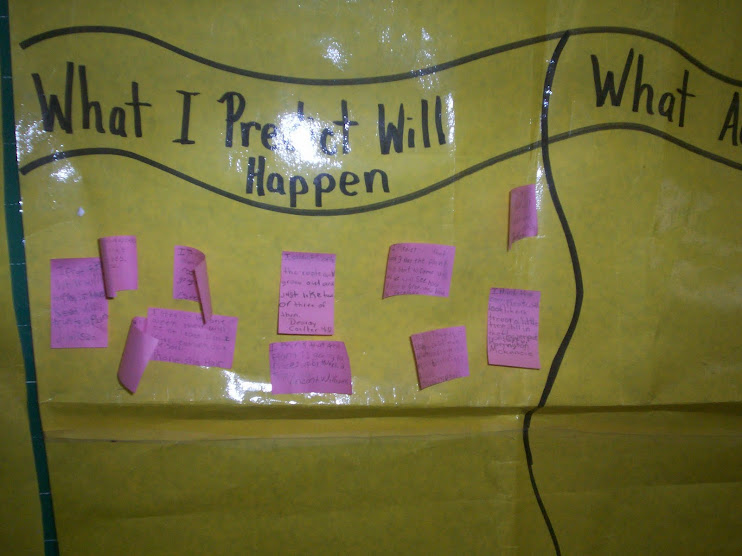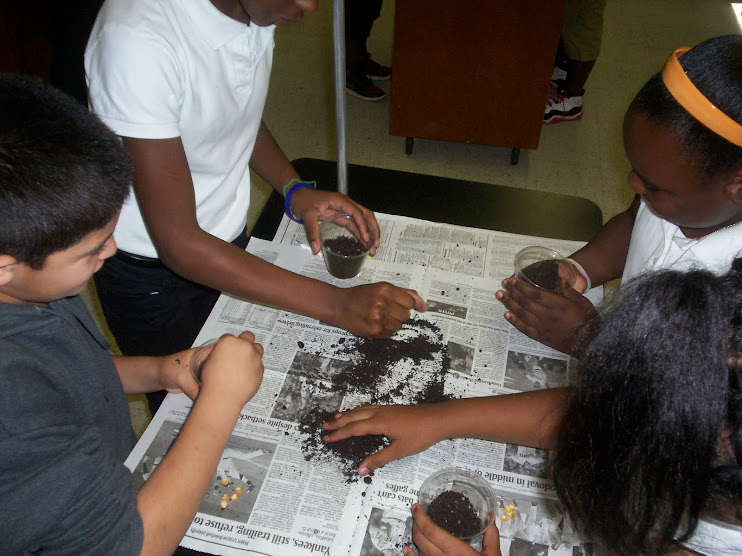The Qualitative research methodology that was used in this ESL Case Study contends how differentiated instruction impacts the stages of reading regarding phonemic awareness vs. whole language which was personified by using Bloom's Taxonomy, which has been proven to improve classroom instruction, and The Stages Of Reading Development. Through out the history of reading development, these two models have been used as the backdrop for developing a sound, and structured reading curriculum from state to state. I attempted to develop a qualitative case study that drew out the differences and similarities between the ESL learner, and the General Ed. learner in a differentiated Reading classroom.
Action Plan
* Draw upon prior knowledge
*Recognize the effects of one’s own point of view in interpreting the text
*Formulate questions before reading
* Make predictions prior to reading, and then make confirmations and revise predictions based upon proven information from the text.
*Evaluate and eliminate information in order to arrive to the best possible answer
When planning this type of lesson, the Teacher should consider scaffolding the lesson by doing Anticipation Guides, or a Think Aloud. Doing a think aloud demonstrates what a skilled reader should do. The following is a guideline as to what skilled readers do while they read:
* Activate prior knowledge: student recalls any information or background that they have in common with the topic. This aids in building background for the text, and helps the reader make sense of what is read.
* Set a purpose/goal for reading: Teacher helps student define the reason, purpose or goal for the reading.
*Decode text into words and meanings: although 4th-6th grade is advanced for decoding, this strategy is used to define unfamiliar words using context clues or word parts (prefixes, suffixes, and word roots)
* Make Connections: skilled readers compare & contrast their knowledge and experiences related to the text
* Make Predictions: readers should look at titles, table of contents, graphic aids, and other qualities of the text.
* Visualize: students should be able to imagine what the character is doing; how the character is feeling; scenes that are laid out in the flow of the story. They should be able to immerse themselves into the reading.
* Ask Questions: Good readers ask questions about the text. They are able to ask what was the author’s purpose for the writing, or background for the setting of the story.
* Summarize: Skillful readers skim through previously read information, synthesizing and evaluating the text as they formulate a logical overall view of the reading.
*Apply: In this process, the skilled reader is able to apply and demonstrate how the learned information comes together, and complete an assigned task with a level of proficiency and mastery.
The following is a comprehensive lesson plan that was used to engage the students mastery of the concepts that were to be presented in this lesson.
Guided Comprehension: Self-Questioning/Self Monitoring tips in Getting the Right Answer
Lesson Objective: This lesson aids in strategic reading, which allows the student to monitor their own thinking and make connections between two or more text, and their own experiences. Students learn different types question/answer relationships, which will help them identify how answers can be found. Students will view the Life of Ruby Bridges, one of the first American-Negro children in the South, to undergo desegregation.
Student Objectives:
Students will…
· Understand SQ3R (Survey, Question, Read, Recite, Review) strategy.
· Answer literary and inference questions, and identify how and where the character’s problems/goals/solutions are relevant to the story.
· Work in small groups and pairs using text derived information and the Inquiry method to find answers.
· Generate questions that demonstrate an understanding of the SQ3R study method.
Materials/Preparation
· Read/View The Story of Ruby Bridges, by Robert Coles to gain an understanding of Ruby’s background and her life.
· SQ3R Study Method Poster
· Guided Comprehension: A Teaching Model for 3-8 by Mary Beth Allen
· Instructional level texts that accommodate the different needs of leveled readers
Week 1
*Teacher Directed-Whole Group instruction (40 min.)
Explain to students that there are two modems of information:
· In the book: the answer can be found in the text
· In my head: the answer cannot be found in the text and must come by way of the reader’s own experiences and knowledge.
*Teacher will demonstrate the SQ3R study method, and do a read aloud of Chapter 1/View Scene 1 of Ruby Bridges.
*Guide students to apply the strategy by having students survey the information read and viewed, and generate questions.
*Practice individually or in small groups-students will complete a comprehension worksheet, which identifies the SQ3R method.
*Reflect-Teacher will bring the class back together as a whole group and discuss how the study method aided them in understanding the text.
Week 1
Teacher/Guided Groups-Facilitated Independence
Students will be divided into three instructional-level groups. Students will be ability grouped, this does not mean that students are on the same reading level, this only means that students may have similar needs for comprehension instruction.
The three stations are;
Teacher-guided small-group instruction
Student-facilitated comprehension centers
Student-facilitated comprehension routines
1. Teacher-guided small-group instruction
· Use SQ3R poster as students view segmented sequenced scenes from the story of Ruby Bridges
· Use instructional-level text to have students practice the study method
· Practice the strategy by having students work together to complete comprehension worksheets based upon the story
· Have students reflect on how the strategy is helping them self-monitor their own comprehension.
Comprehension Centers: In center, S/will complete a Circle Map to brainstorm what they know about the SQ3R study method.
Music/Poetry Center-go to Ruby Bridges website: http://www.rubybridges.com/
Writing Center: s/will create a Bubble Map using descriptive words that tell about Ruby’s character.
Art Center
Note: Classroom discipline during center time is at the discretion of the teacher.
2. Student-facilitated comprehension routines: students engage in three different literacy stages. Students are expected to practice the SQ3R study strategy after reading/viewing the second sequenced session of Ruby Bridges
Week 2
Whole-Group Reflection (20 min.)
1. Teacher will talk to students about self-inquiry comprehension methods.
2. Students will be given time to share activities they completed from the student-facilitated center.
3. Complete the Story of Ruby Bridges
Assessment/Reflections
Informal/Formal Assessment
Students can be assessed on SQ3R Study Method
Students can do oral exam on how the SQ3R method helped them through the story.
References
Guided Comprehension: Knowing How Words Work Using Semantic Feature Analysis
Reading Strategies: Scaffolding Students’ Interactions with text; www.greece.k12.ny.us/instruction/ela/6-12/Reading
Subscribe to:
Post Comments (Atom)































This concept can be adapted to any lesson or thematic unit. I just used this lesson format for this year's African-American History Month this past Febuary.
ReplyDelete